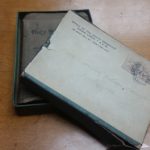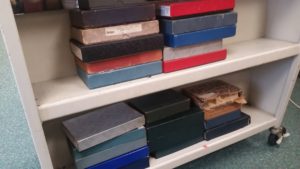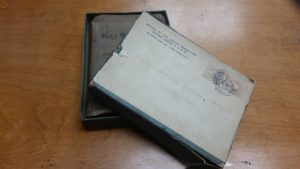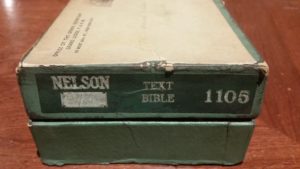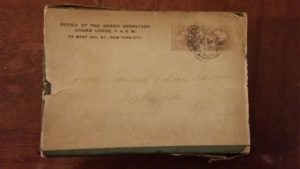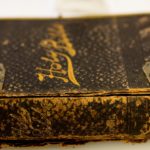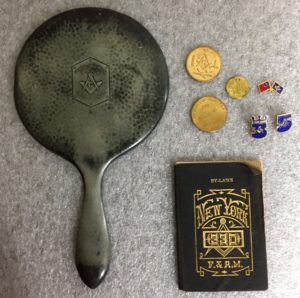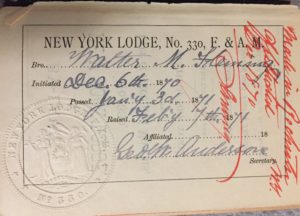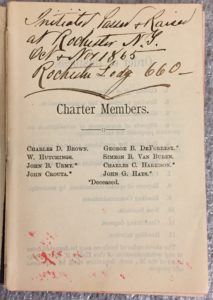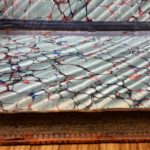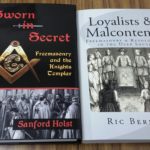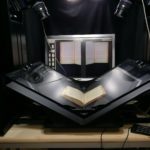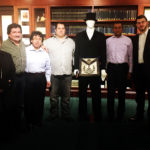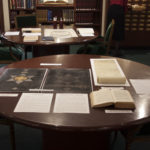
Periodically, the Chancellor Robert R Livingston Masonic Library of the Grand Lodge of New York receives requests from a Lodge Master to visit the Library as one of their Lodge Meeting events. Either I stay late to welcome them into the Library, or one of our Library Trustees from the NYC area comes in that evening to do so.
As the Curator of the Museum’s Artifact Collection, when I know a Lodge is coming to visit, and I have enough advance notice, I try to find artifacts related to the Lodge as well as information about the Lodge which might be of interest to the Lodge members. I then arrange the material on our tables for the Lodge members’ perusal.
We received such a request from Mount Moriah Lodge No. 20, which meets in the Ionic Room here at Grand Lodge for a December visit. RW Demetrios “Jim” Melis, Library Trustee, gave a short talk in the Lodge about the Library, and then brought the Lodge members to the Library to show them our exhibits and the material I had prepared for them.
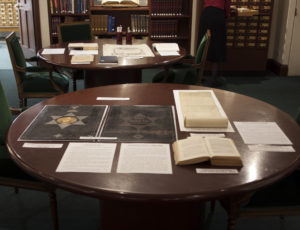
Moriah Lodge No. 20 was warranted as Mount Moriah No. 132 in 1806, and became No. 27 in 1839. In 1973, it merged with Pioneer Lodge No. 20 to become Mount Moriah Lodge No. 20. One of the early members of Mount Moriah Lodge No. 27 was Grand Tiler Greenfield Pote, who, in 1843, famously gave the first dollar to the newly-proposed fund. This fund was designed for:
1st. The erection of a HALL in the City of New-York, for the Grand Lodge and other Masonic Bodies.
2d. The founding of an ASYLUM for worthy, decayed Masons, their Widows and Orphans.
So, because of the story of RW Pote, for the visit of Mount Moriah Lodge No. 20 to the Library, I arranged on one table materials related to the History of Mount Moriah Lodge No. 20, and on the other table, materials related to the History of Greenfield Pote. These items are listed below:
Table 1: History of Mount Moriah Lodge No. 20
- 3 Copies of printout of Mount Moriah Lodge No. 20 important dates
- Book: GLNY Proceedings 1903 with expanded history of Mount Moriah Lodge No. 27 (M17.2 N.Y. M86h)
- Book: Mount Moriah Lodge No. 27 Meeting Notices 1936 (M17.2 N.Y. M86)
- 3 Copies of printout of GLNY Proceedings 1903 history
- Book: History of Mount Moriah Lodge No. 27, 1806-1936
- Traveling Certificate, 1852 – Phillips Grand Lodge, for Joseph Stern
- Book – GLNY Proceedings 2015, showing Phillips Grand Lodge Officers
- Sign explaining the schism of the Phillips Grand Lodge
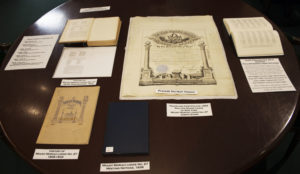
Table 2: History of Greenfield Pote
- Tin frame and Photograph of Greenfield Pote
- 3 copies of printout of Greenfield Pote’s biography
- 3 copies of printout of the story of the first dollar donated
- Book: GLNY Proceedings, 1843 showing memorial of proposal for Hall and Asylum Fund
- 3 copies of printout of the proposal to create Hall and Asylum Fund
- Scroll of Donors: showing Greenfield Pote as first donor
- Sign: showing James Herring served as Grand Secretary for legitimate GLNY in Table 2 material, and as Grand Secretary for the illegitimate Phillips Grand Lodge material on Table 1. Upon the Union, he was accorded legitimate Past Grand Officer status.
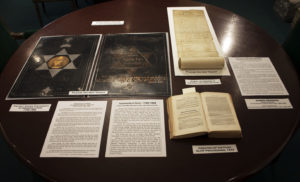
Lodge members were welcome to handle, touch and pick up everything except for the items in bold, and were welcome to take with them the printed-out copies of data.
From all accounts, the Lodge enjoyed the visit to the Library, and were interested and glad to see the special temporary exhibit I designed for them to learn more about the history of their Lodge.
If you belong to a Lodge which would like a similar visit, please don’t hesitate to contact us at info@nymasoniclibrary.org. We are thrilled to share your history with you!
If you belong to a non-Masonic group, and have a particular interest in some aspect of New York history, we may be able to create a similar temporary exhibit focused on your topic for the benefit of your members.
The Book, Archives, Vertical Files and Artifact Collections held by the Chancellor Robert R Livingston Masonic Library of the Grand Lodge of New York contain a wealth of information and memorabilia about New York City, New York State, United States and world history that is unparalleled in its range and breadth.
Come and discover this hidden jewel!
